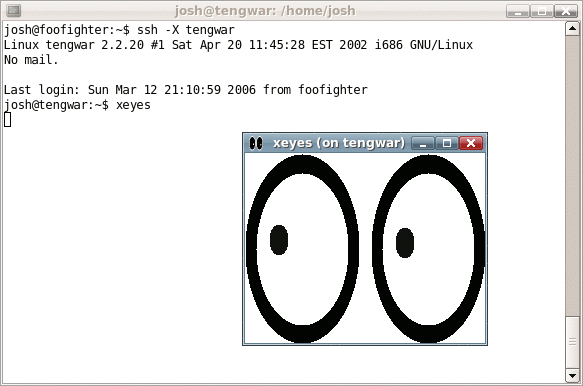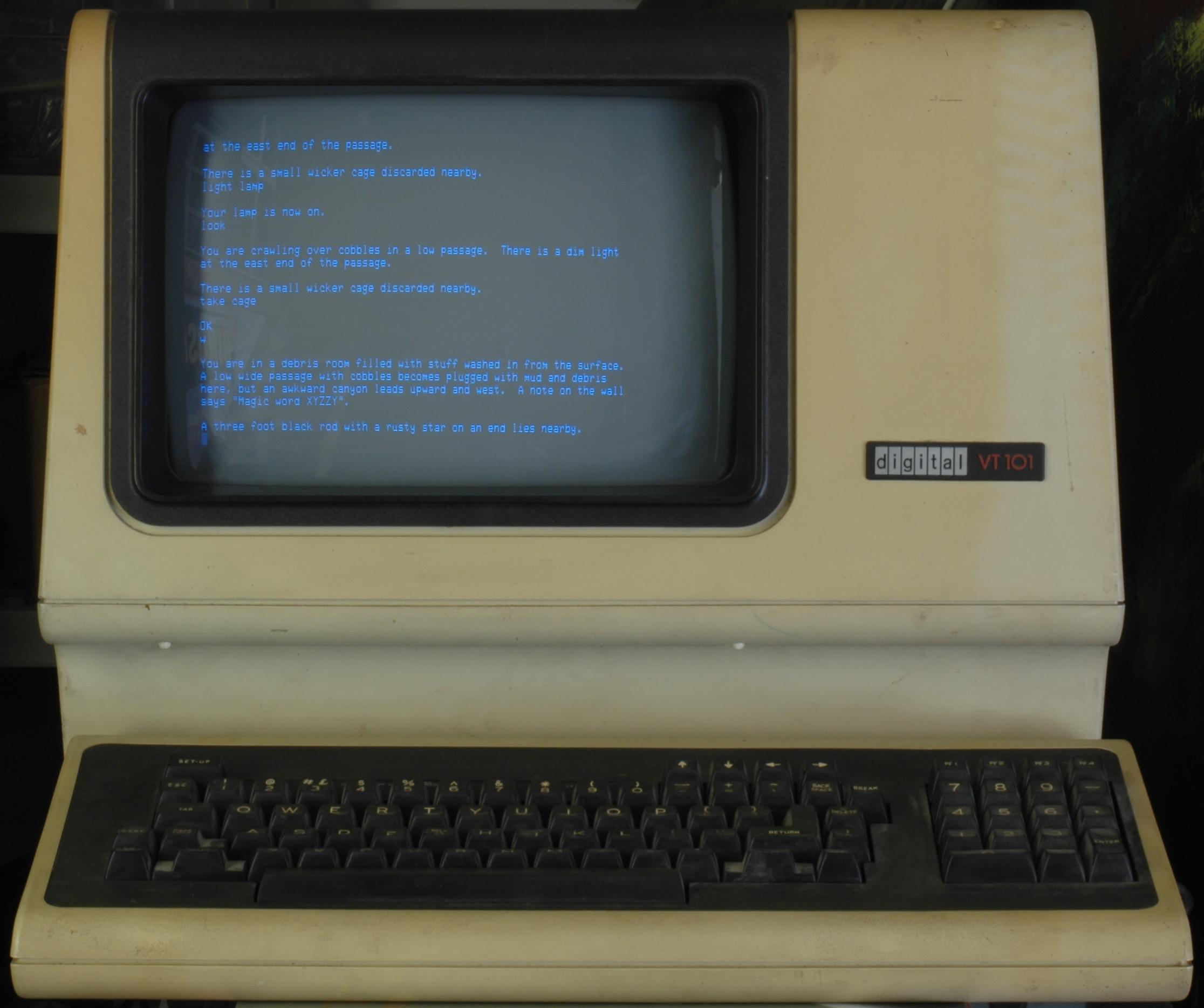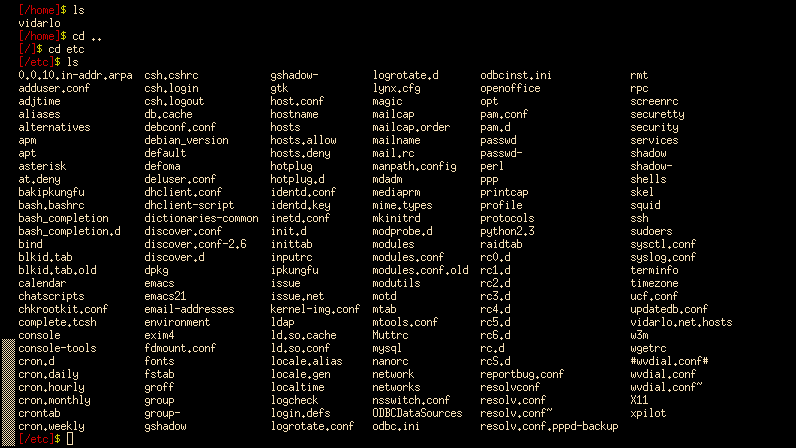|
Headless System
A headless computer is a computer system or device that has been configured to operate without a monitor (the missing "head"), keyboard, and mouse. A headless system is typically controlled over a network connection, although some headless system devices require a serial connection to be made over RS-232 for administration of the device. Headless operation of a server is typically employed to reduce operating costs. PC BIOS limitations During bootup, some (especially older) PC BIOS versions will wait indefinitely for a user to press a key before proceeding. If some basic device, such as a video card or keyboard, are not installed or connected, this could effectively halt an unattended system. On more modern systems, the BIOS factory setting will typically be configured to behave this way as well, but this setting can be changed with a BIOS setup utility to proceed without user intervention. Even in cases where a system has been set up to be managed remotely, a local keyboard ... [...More Info...] [...Related Items...] OR: [Wikipedia] [Google] [Baidu] |
Monitor (computer)
A computer monitor is an output device that displays information in pictorial or textual form. A discrete monitor comprises a visual display, support electronics, power supply, housing, electrical connectors, and external user controls. The display in modern monitors is typically an LCD with LED backlight, having by the 2010s replaced CCFL backlit LCDs. Before the mid-2000s, most monitors used a CRT. Monitors are connected to the computer via DisplayPort, HDMI, USB-C, DVI, VGA, or other proprietary connectors and signals. Originally, computer monitors were used for data processing while television sets were used for video. From the 1980s onward, computers (and their monitors) have been used for both data processing and video, while televisions have implemented some computer functionality. In the 2000s, the typical display aspect ratio of both televisions and computer monitors has changed from 4:3 to 16:9. Modern computer monitors are mostly interchangeable with television set ... [...More Info...] [...Related Items...] OR: [Wikipedia] [Google] [Baidu] |
Command Line
A command-line interpreter or command-line processor uses a command-line interface (CLI) to receive commands from a user in the form of lines of text. This provides a means of setting parameters for the environment, invoking executables and providing information to them as to what actions they are to perform. In some cases the invocation is conditional based on conditions established by the user or previous executables. Such access was first provided by computer terminals starting in the mid-1960s. This provided an interactive environment not available with punched cards or other input methods. Today, many users rely upon graphical user interfaces and menu-driven interactions. However, some programming and maintenance tasks may not have a graphical user interface and use a command line. Alternatives to the command-line interface include text-based user interface menus (for example, IBM AIX SMIT), keyboard shortcuts, and various desktop metaphors centered on the pointer (usual ... [...More Info...] [...Related Items...] OR: [Wikipedia] [Google] [Baidu] |
X11vnc
x11vnc is a Virtual Network Computing (VNC) server program. It allows remote access from a remote client to a computer hosting an X Window session and the x11vnc software, continuously polling the X server's frame buffer for changes. This allows the user to control their X11 desktop (KDE, GNOME, Xfce, etc.) from a remote computer either on the user's own network, or from over the Internet as if the user were sitting in front of it. x11vnc can also poll non-X11 frame buffer devices, such as webcams or TV tuner cards, iPAQ, Neuros OSD, the Linux console, and the Mac OS X graphics display. x11vnc is part of the LibVNCServer project and is free software available under the GNU General Public License. x11vnc was written by Karl Runge. x11vnc does not create an extra display (or X desktop) for remote control. Instead, it uses the existing X11 display shown on the monitor of a Unix-like computer in real time, unlike other Linux alternatives such as TightVNC Server. However, it is pos ... [...More Info...] [...Related Items...] OR: [Wikipedia] [Google] [Baidu] |
Xvfb
Xvfb or X virtual framebuffer is a display server implementing the X11 display server protocol. In contrast to other display servers, Xvfb performs all graphical operations in virtual memory without showing any screen output. From the point of view of the client, it acts exactly like any other X display server, serving requests and sending events and errors as appropriate. However, no output is shown. This virtual server does not require the computer it is running on to have any kind of graphics adapter, a screen or any input device. Only a network layer is necessary. Usage scenarios Xvfb is primarily used for testing: # Since it shares code with the real X server, it can be used to test the parts of the code that are not related to the specific hardware. # It can be used to test clients in various conditions that would otherwise require a range of different hardware; for example, it can be used to test whether clients work correctly at depths or screen sizes that are rarely ... [...More Info...] [...Related Items...] OR: [Wikipedia] [Google] [Baidu] |
TCP/IP
The Internet protocol suite, commonly known as TCP/IP, is a framework for organizing the set of communication protocols used in the Internet and similar computer networks according to functional criteria. The foundational protocols in the suite are the Transmission Control Protocol (TCP), the User Datagram Protocol (UDP), and the Internet Protocol (IP). In the development of this networking model, early versions of it were known as the Department of Defense (DoD) model because the research and development were funded by the United States Department of Defense through DARPA. The Internet protocol suite provides end-to-end data communication specifying how data should be packetized, addressed, transmitted, routed, and received. This functionality is organized into four abstraction layers, which classify all related protocols according to each protocol's scope of networking. An implementation of the layers for a particular application forms a protocol stack. From lowest to high ... [...More Info...] [...Related Items...] OR: [Wikipedia] [Google] [Baidu] |
Graphical User Interface
The GUI ( "UI" by itself is still usually pronounced . or ), graphical user interface, is a form of user interface that allows users to interact with electronic devices through graphical icons and audio indicator such as primary notation, instead of text-based UIs, typed command labels or text navigation. GUIs were introduced in reaction to the perceived steep learning curve of CLIs ( command-line interfaces), which require commands to be typed on a computer keyboard. The actions in a GUI are usually performed through direct manipulation of the graphical elements. Beyond computers, GUIs are used in many handheld mobile devices such as MP3 players, portable media players, gaming devices, smartphones and smaller household, office and industrial controls. The term ''GUI'' tends not to be applied to other lower-display resolution types of interfaces, such as video games (where HUD (''head-up display'') is preferred), or not including flat screens like volumetric displays because ... [...More Info...] [...Related Items...] OR: [Wikipedia] [Google] [Baidu] |
Display Driver
In electronics/computer hardware, a display driver is usually a semiconductor integrated circuit (but may alternatively comprise a state machine made of discrete logic and other components) which provides an interface function between a microprocessor, microcontroller, ASIC or general-purpose peripheral interface and a particular type of display device, e.g. LCD, LED, OLED, ePaper, CRT, Vacuum fluorescent or Nixie. The display driver will typically accept commands and data using an industry-standard general-purpose serial or parallel interface, such as TTL, CMOS, RS-232, SPI, I2C, etc. and generate signals with suitable voltage, current, timing and demultiplexing to make the display show the desired text or image. The display driver may itself be an application-specific microcontroller and may incorporate RAM, Flash memory, EEPROM and/or ROM. Fixed ROM may contain firmware and display fonts. A notable example of a display driver IC is the Hitachi HD44780 LCD controlle ... [...More Info...] [...Related Items...] OR: [Wikipedia] [Google] [Baidu] |
X Window System
The X Window System (X11, or simply X) is a windowing system for bitmap displays, common on Unix-like operating systems. X provides the basic framework for a GUI environment: drawing and moving windows on the display device and interacting with a mouse and keyboard. X does not mandate the user interfacethis is handled by individual programs. As such, the visual styling of X-based environments varies greatly; different programs may present radically different interfaces. X originated as part of Project Athena at Massachusetts Institute of Technology (MIT) in 1984. The X protocol has been at version 11 (hence "X11") since September 1987. The X.Org Foundation leads the X project, with the current reference implementation, X.Org Server, available as free and open-source software under the MIT License and similar permissive licenses. Purpose and abilities X is an architecture-independent system for remote graphical user interfaces and input device capabilities. Each person using a ... [...More Info...] [...Related Items...] OR: [Wikipedia] [Google] [Baidu] |
Secure Shell
The Secure Shell Protocol (SSH) is a cryptographic network protocol for operating network services securely over an unsecured network. Its most notable applications are remote login and command-line execution. SSH applications are based on a client–server architecture, connecting an SSH client instance with an SSH server. SSH operates as a layered protocol suite comprising three principal hierarchical components: the ''transport layer'' provides server authentication, confidentiality, and integrity; the ''user authentication protocol'' validates the user to the server; and the ''connection protocol'' multiplexes the encrypted tunnel into multiple logical communication channels. SSH was designed on Unix-like operating systems, as a replacement for Telnet and for unsecured remote Unix shell protocols, such as the Berkeley Remote Shell (rsh) and the related rlogin and rexec protocols, which all use insecure, plaintext transmission of authentication tokens. SSH was first de ... [...More Info...] [...Related Items...] OR: [Wikipedia] [Google] [Baidu] |
VT100
The VT100 is a video terminal, introduced in August 1978 by Digital Equipment Corporation (DEC). It was one of the first terminals to support ANSI escape codes for cursor control and other tasks, and added a number of extended codes for special features like controlling the status lights on the keyboard. This led to rapid uptake of the ANSI standard, which became the de facto standard for hardware video terminals and later terminal emulators. The VT100 series, especially the VT102, was extremely successful in the market, and made DEC the leading terminal vendor at the time. The VT100 series was replaced by the VT200 series starting in 1983, which proved equally successful. Ultimately, over six million terminals in the VT series were sold, based largely on the success of the VT100. Description DEC's first video terminal was the VT05 (1970), succeeded by the VT50 (1974), and soon upgraded to the VT52 (1975). The VT52 featured a text display with 80 columns and 24 rows, bidirection ... [...More Info...] [...Related Items...] OR: [Wikipedia] [Google] [Baidu] |
Digital Equipment Corporation
Digital Equipment Corporation (DEC ), using the trademark Digital, was a major American company in the computer industry from the 1960s to the 1990s. The company was co-founded by Ken Olsen and Harlan Anderson in 1957. Olsen was president until forced to resign in 1992, after the company had gone into precipitous decline. The company produced many different product lines over its history. It is best known for the work in the minicomputer market starting in the mid-1960s. The company produced a series of machines known as the PDP line, with the PDP-8 and PDP-11 being among the most successful minis in history. Their success was only surpassed by another DEC product, the late-1970s VAX "supermini" systems that were designed to replace the PDP-11. Although a number of competitors had successfully competed with Digital through the 1970s, the VAX cemented the company's place as a leading vendor in the computer space. As microcomputers improved in the late 1980s, especially wit ... [...More Info...] [...Related Items...] OR: [Wikipedia] [Google] [Baidu] |
Terminal Emulator
A terminal emulator, or terminal application, is a computer program that emulates a video terminal within some other display architecture. Though typically synonymous with a shell or text terminal, the term ''terminal'' covers all remote terminals, including graphical interfaces. A terminal emulator inside a graphical user interface is often called a terminal window. A terminal window allows the user access to a text terminal and all its applications such as command-line interfaces (CLI) and text user interface (TUI) applications. These may be running either on the same machine or on a different one via telnet, ssh, dial-up, or over a direct serial connection. On Unix-like operating systems, it is common to have one or more terminal windows connected to the local machine. Terminals usually support a set of escape sequences for controlling color, cursor position, etc. Examples include the family of terminal control sequence standards known as ECMA-48, ANSI X3.64 or ISO/IEC 6 ... [...More Info...] [...Related Items...] OR: [Wikipedia] [Google] [Baidu] |






